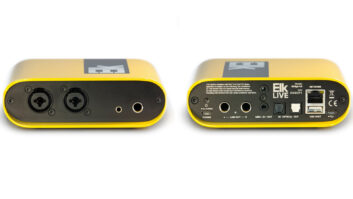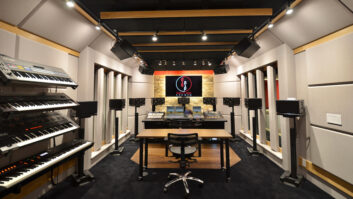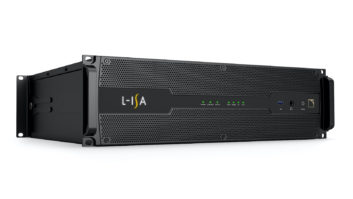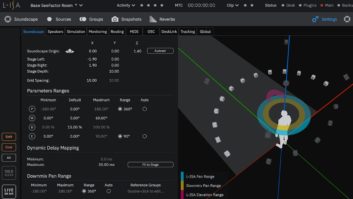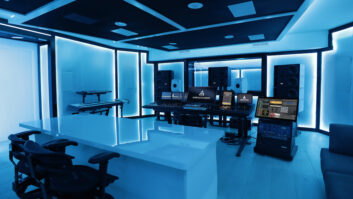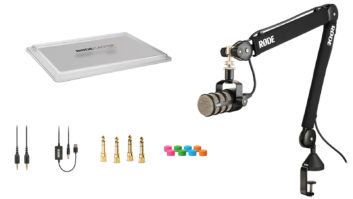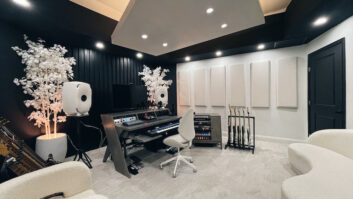
Kevin Suggs arrived in Seattle just in time for the ‘90s grunge-era gold rush, when the city was bursting with bands looking to score a record deal. Spending a decade of 12-hour-plus days pushing faders at studios like Avast! Recording Company was the perfect training to head up audio engineering for the podcast series Live on KEXP.
“Things just started to explode,” Suggs says. “Even though I wasn’t working with any huge Seattle bands, there were just so many bands and everybody was recording. It was a very vibrant time to be making music in this town. Everybody had a shot.”
As a freelance engineer and steel guitarist, Suggs racked up credits on albums by Death Cab For Cutie, The Shins and Brandi Carlile. By the time he arrived at KEXP, a non-profit arts organization known for curating adventurous music for its FM radio station and online properties, the audio crew was producing more than 100 live music sessions a year.

Live on KEXP—until this week, known as KEXP’s Live Performances—is the latest evolution of a podcasting program that began in 2004, and a key arm of the organization’s multi-platform approach that includes broadcasting to the Seattle radio market and streaming to two million YouTube subscribers.
Every note of sound, though, begins with Suggs and the audio engineering team. Today, KEXP logs about 300 performances every year. To maintain efficiency and consistency, Suggs begins each session with a proven template based around workhorse mics like Shure SM57s and SM58s and a baseline of plug-ins and presets in Pro Tools.
“My mantra for these things is just simplicity,” says Suggs. “I’m not trying to recreate a band’s record or anything. I’m trying to capture what the band is giving.”

Until a few years ago, the engineers mixed the audio to two-track on an eight-bus digital Mackie board before sending it to Pro Tools. These days, they automate the mix through an Avid S6 Pro Tools control surface.
“It’s recording every move I make,” he says. “If I didn’t quite get that guitar solo up in time, I can make a marker. And then once we’re off the air, I can go back and I can fix that [for the podcast].”
Major Podcasters Keep Content Coming Despite Pandemic
Like any live recording situation, though, control is a relative concept. There’s only so much isolation you can do when a full band is playing together in room. Suggs has a few tricks to help keep instruments in their own lanes, but sometimes he simply has to let it bleed.
“I always start my mixes with the vocal mics up because they’re going to color everything,” he notes. “It doesn’t make a lot of sense to solo the kick drum, because as soon you push those vocal mics up, it’s going to change that kick drum sound completely. It’s just a matter of embracing the bleed, because you’re going to get a lot of it.”
Instead of setting up bands according to their stage plots, Suggs positions them in a circle, with everyone facing each other like in a rehearsal. In the absence of isolation barriers, this configuration cancels some of the interference between the vocal mic and drum mics.
Explore Podcast Pro!
Every session that ends up on the Live on KEXP podcast is first broadcast via radio to the Seattle area. With few exceptions, what ends up on YouTube and the podcast is exactly the same as what the radio listeners heard. The main difference between the broadcast and streaming audio is in the mastering stage.

“We hit the one that goes out on the air with a little more compression [from a LA-2A], and then we do a raw track [for streaming] that has nothing on it and no compression. That’s what we usually use for mastering, so we can start fresh without any other compression.”
When shelter-in-place orders came into play in March, the Live on KEXP team was already set up to have their engineers work remotely. Most, like Suggs, have studios in their homes, so they’re able to mix and master sessions seamlessly.
Luckily, KEXP has enough sessions in the can to last well into the summer months. The only audio currently being recorded at home for the Live on KEXP podcast is the voiceover by host Troy Nelson, who runs an AKG Perception 20 mic through a Universal Audio Arrow audio interface into Logic Pro X.
Rest assured, Suggs and the audio engineering team will be ready to go as soon as they’re able to get back to the studio.
“I really feed off of the vibe,” he says. “There’s really something about that live energy and the mix being a performance. At the same time as the band’s performing, you’re performing the mixing. You still get that adrenaline rush. There’s no net.”
